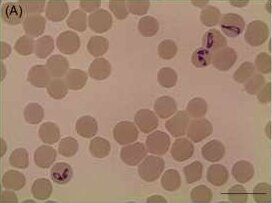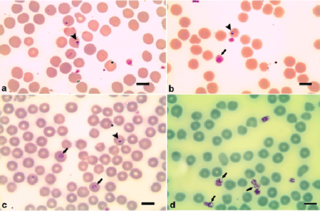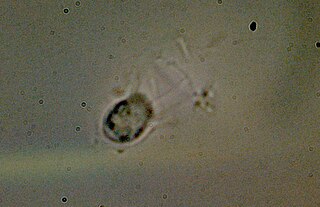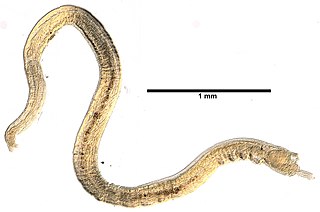
Genus is a taxonomic rank above species and below family as used in the biological classification of living and fossil organisms as well as viruses. In binomial nomenclature, the genus name forms the first part of the binomial species name for each species within the genus.

Charales is an order of freshwater green algae in the division Charophyta, class Charophyceae, commonly known as stoneworts. Depending on the treatment of the genus Nitellopsis, living (extant) species are placed into either one family (Characeae) or two. Further families are used for fossil members of the order. Linnaeus established the genus Chara in 1753.
The World Register of Marine Species (WoRMS) is a taxonomic database that aims to provide an authoritative and comprehensive catalogue and list of names of marine organisms.
Brachypareion is an extinct genus of prehistoric marine ray-finned fish that lived during the Pennsylvanian epoch. It contains a single species, B. insperatum, known from the Saur Mountains of Kazakhstan. It is placed in the paraphyletic group Palaeonisciformes.

Babesia caballi is a species belonging to Alveolata and the family Babesiidae. In horses, it causes the babesiosis disease, called "equine babesiosis". Its length is 2.5-5 μm, while its width is 2 μm. It is usually oval-shaped. Its vector and second feeders are ticks. In North America B. caballi is being spread by Dermacentor nitens.

Babesia motasi is a species belonging to Alveolata and the family Babesiidae. In sheep causes babesiosis disease, called "sheep babesiosis". Babesia motasi is quite big protozoa. Length 2,5-5 μm, usually pear-shaped. Is rare in erythrocytes.

Baiera is a genus of prehistoric gymnosperms in the order Ginkgoales. It is one of the oldest fossil foliage types of Ginkgoales, and is related to the genera Ginkgo and Ginkgoites. Fossils of Baiera are found worldwide, and have been known from the Permian to the Cretaceous.

The Interim Register of Marine and Nonmarine Genera (IRMNG) is a taxonomic database which attempts to cover published genus names for all domains of life, from 1758 in zoology up to the present, arranged in a single, internally consistent taxonomic hierarchy, for the benefit of Biodiversity Informatics initiatives plus general users of biodiversity (taxonomic) information. In addition to containing just over 500,000 published genus name instances as at May 2023, the database holds over 1.7 million species names, although this component of the data is not maintained in as current or complete state as the genus-level holdings. IRMNG can be queried online for access to the latest version of the dataset and is also made available as periodic snapshots or data dumps for import/upload into other systems as desired. The database was commenced in 2006 at the then CSIRO Division of Marine and Atmospheric Research in Australia and, since 2016, has been hosted at the Flanders Marine Institute (VLIZ) in Belgium.
Compsosaurus is an extinct genus of phytosaur, a crocodile-like reptile that lived during the Triassic. Its fossils have been found in North Carolina. The type species, Compsosaurus priscus, was named by American paleontologist Joseph Leidy in 1856, although other sources say 1857. Compsosaurus may have been the same animal as the related Belodon.

Darwinula is a genus of ostracods belonging to the family Darwinulidae.

Acanthoecida is an order of Choanoflagellates belonging to the class Choanoflagellatea. It is a type of heterotrophic nanoflagellate that feeds on suspended particles.

Anomalocardia is a genus of bivalves belonging to the family Veneridae.

Cancellothyrididae is a family of brachiopods belonging to the order Terebratulida. It was first described by James Allan Thomson in 1926.

Protodrilida is an order of polychaetes belonging to the class Polychaeta.
Opheliida is an order of polychaetes belonging to the class Polychaeta.
Chromadorida is an order of nematodes belonging to the class Chromadorea.
Leptolaimida is an order of nematodes belonging to the class Chromadorea.
Lestonia is a genus of true bugs belonging to the monotypic family Lestoniidae.

Antipterna is a genus of moths of the family Oecophoridae, first described by Edward Meyrick in 1916.












